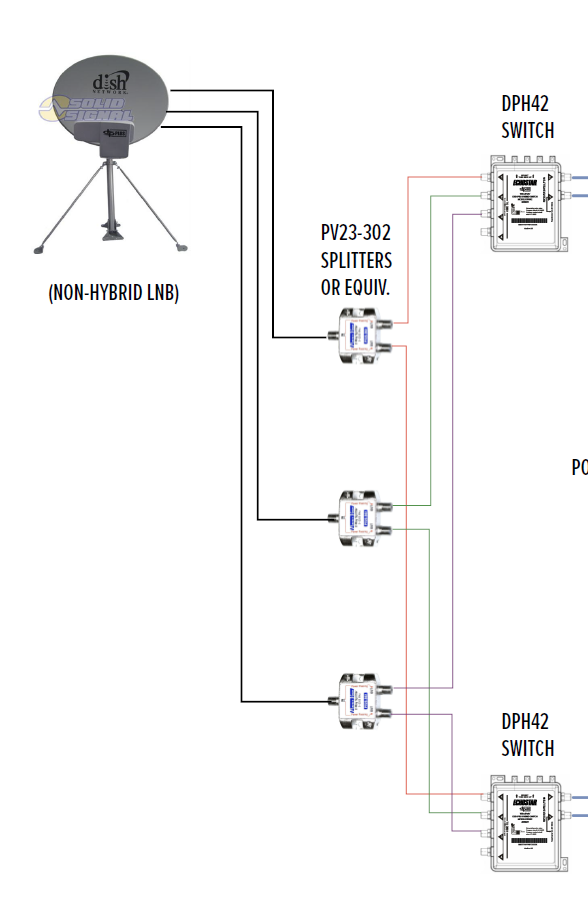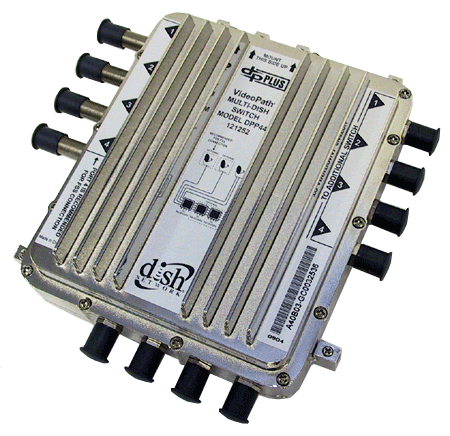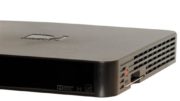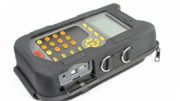The venerable DPP44 multiswitch has been a mainstay of DISH installations for almost ten years now. It’s simple, flexible, and reliable. It’s not only the easiest way to use DISH’s non-Hopper receivers, it’s pretty much the only way unless you’re still only using one receiver.
What most folks don’t know is that it’s possible to cascade a total of three DPP44’s to use up to 12 receivers quite easily. Connect short cables from the ports labeled “to additional switch” on the side of the multiswitch. Then, connect them to the next multiswitch. From there you can connect to the receivers. It’s easy to pile three multiswitches together, and if you need more than that, you’ll need to use splitters and possibly an amplifier to get the signal to another set of multiswitches.
Cables between multiswitches should ideally be 18″ to two feet. Much longer and you could deal with loss, and much shorter and you could deal with reflections that cut overall signal. If you need to, loop cables loosely and make sure not to create bends or kinks.
This is a perfect way to use 211, 722, or other older receivers in your home or business and it’s also a time-tested solution that makes expansion easy.
But there’s a better way

This is the DPH42 hybrid switch from DISH. It’s been out for a few years now and is the standard switch for commercial installations. Home installations should use a dish with a Hybrid LNB in most cases.
The DPH42 has channel stacking technology built into it. In other words, it’s capable of putting all four satellite signals on a single wire for easy distribution. Because all the signals are always available, a receiver with a built-in destacker can be added easily. Here’s how it’s done.
After the outputs of the DPH42, you can use stacking splitters like this 2-port and 4-port version, both available at Solid Signal. From there the signal can be split multiple times with each output feeding one receiver. The Wally receiver is used for this purpose as it is designed with a built-in destacker. DISH recommends no more than 16 receivers off each port, because you lose about 25% of the signal each time you split.
Here’s how it looks
This diagram comes from the DPH42 installation guide and shows 32 receivers coming from a single DPH42 switch.

The DPH42 can also be used to create a mixed Hopper/Wally installation in a home. Note that when you use a DPH42 switch you do not use a hybrid LNB on the dish. You use the standard Eastern Arc or Western Arc dish. The switch adds the “hybrid” functionality to the setup.
Using multiple DPH42 switches
The DPH42 does not have cascade ports like the DPP44 so if you want to use more than one, you simply split the lines from the dish using 2-port or 4-port power-passing splitters. These splitters go between the dish and the switches. Make sure when you do connect them that the same output from the dish goes into the same port on each switch. Here’s a look at how that would be with two DPH42s.

If you’re going to split more than once, you should always be careful of signal strength. A good satellite meter will be your friend here. If you need a bigger installation than this, Solid Signal can recommend all the amplifiers you’ll need to make sure that you get the best signal everywhere you need it.





